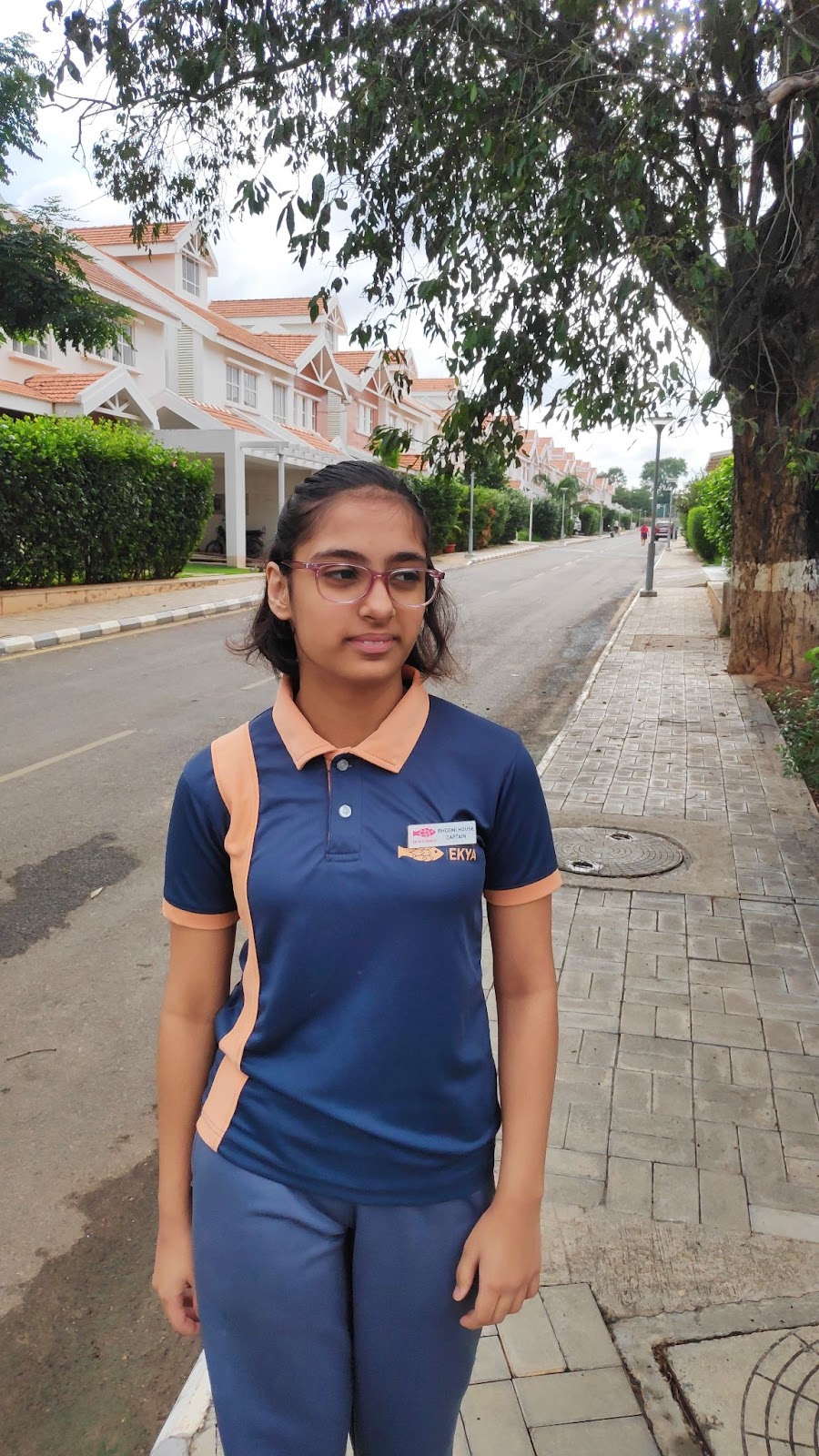Our Schools
Prani: The Pet Sanctuary is one of its one-of-a-kind experiential education parks. An initiative of Into the Wild focuses on outdoor experiential education.
Experiential education is the best teaching approach for young minds, enabling them to connect to the natural world. Interactions with nature and animal life will facilitate mindset growth and physical well-being.
This being one of the critical aspects of learning in Ekya Schools, field trips are planned to ensure that students connect with the natural world and expand their knowledge. As part of their field trip, students of grade 3 of Ekya School, Byrathi, visited this pet sanctuary on 19 July 2023. This experience assisted students in observing, touching, feeling and listening to various sights and sounds around them to enjoy nature and be empathetic towards the exploited animals.
As they were allowed to interact with species being conserved and rehabilitated, students were more curious to learn about these animals and record their experiences in their journals. It was an open environment that welcomed curiosity and cultivated environmental literacy, which can be implemented.
Over and above, students were educated on correct thinking about animals and the natural world. It also allowed them to ponder co-existence, care and concern for animal and plant life and become responsible citizens.
By
Prema V
Kannada Language Teacher
Ekya School, Byrathi
#TeacherBlogger: NUTRITION AND HEALTH By Ms Pooja Hegde, Ekya School, JP Nagar
Nutrition is a basic human need and a prerequisite for a healthy life.
A proper diet is essential from a very early age for growth, development and active life.
Nutrition is the science that deals with all the various factors of which food is composed and how proper nourishment is brought about.
It’s no secret that what you eat every day directly impacts your digestive system – and that some foods can make your belly feel worse than others.
Good nutrition helps fuel your body. The foods you eat supply the nutrients your body needs to maintain your brain, muscles, bones, nerves, skin, blood circulation, and immune system. Proper nutrition also helps protect you from illness and disease, such as heart disease, diabetes, cancer, and osteoporosis.
But certain foods have superpowers in the gut, actually upgrading the health of your microbiome (the trillions of bacteria that live there) – plus keeping you regular so you’re not struggling with constipation. Consider adding some of these to your grocery cart and putting them on your plate!
Fermented foods: These are probiotic-rich foods that bacteria have naturally preserved, so they help the beneficial bacteria in your gut to grow. That leaves less room for harmful bacteria that can cause illness.
-
- Fermented foods include:
Yoghurt: Look for “live and active cultures” on the label. Even if you have lactose intolerance, there’s a good chance you can handle yoghurt since the bacteria also ferments and breaks down the lactose.
Prebiotic foods: These plant foods work like “food” for probiotics, helping those good bacteria grow and flourish in your gut. Foods that naturally contain prebiotics include:
- Onions: Whether you eat them raw or cooked, they help feed healthy gut bacteria.
- Bananas: Very ripe bananas are sweeter, but less ripe bananas will have more prebiotic power.
- Sweet potatoes: They work as a prebiotic and are a great source of fibre.
- Apples: They contain pectin, a starch that acts as a prebiotic. (Bonus: They’re one of the most filling fruits, so they’re good at satisfying hunger.)
High-fibre foods: Fiber does many good things for your gut, like softening stools so they’re easier to pass. Just be sure to slowly add high-fibre foods to your diet, as too much fibre too quickly can give you bloating and gas.
- Beans: They’re a high-protein swap for meat and deliver loads of fibre.
- Raspberries: All berries are good sources of fibre, but raspberries are one of the highest-fibre fruits around. Buy frozen if fresh is hard to find.
- Seeds like flaxseed and chia seeds: Add these fibre-rich seeds to oatmeal and smoothies. (Just be sure to choose ground flaxseed to get the benefits.)
- Oats: No matter what kind you choose – old-fashioned, quick, or steel-cut –they’re fibre-rich and work as a prebiotic.
- Whole grains: For more fibre, trade white rice for brown, white pasta for whole-wheat, and egg noodles for barley noodles in soup.


By Ms Pooja Hegde Teaching Staff Ekya School, JP Nagar.
#StudentBlogger: Supreme solar – field trip By Ira Dwivedi, Grade 7A, Ekya Schools, Byrathi
Solar power is the most abundant energy and an essential renewable resource. Our term one field trip was to Supreme Solar Projects in Yelahanka. We had an exciting day and learned much about manufacturing solar heaters and other solar-powered products.
We started our journey by bus to the factory and, amidst the traffic, went towards our destination. Our class exchanged jokes and chips during our trip and laughed and sang. A pleasant surprise came as we stopped at a toll booth to see another bus filled with students from CMR. Our class had a jolly time on the bus and a growing curiosity about the place we would visit.
Upon arrival, I saw the immense factory and got off the bus in awe. Our class and the CMR students lined up in batches and entered the factory. The first thing I noticed was the numerous processes and proceedings of the factory. Metals were being cut into strips, circular cutting, cutting by laser and various other things in motion. The guide explained the types of heaters they manufacture- Tube and Panel heaters- and told us about the dimensions and proportions used.
We walked around to see how the tank for the heaters was being made and were explained the procedures around the factory. There were various processes to create a seemingly simple thing. Hole punching, rolling, welding, cutting and setting, leakage testing, sand rupturing, coating, heating, painting, thermal insulation, securing and assembly were all processes shown to us. Seeing how something familiar was manufactured at such a large scale was intriguing.
While my batch was waiting for the other set to finish their tour, I realized that this trip was an extension of our learning in school. We have been learning about renewable resources in Social Science, and solar heaters are a way to harness the monumental energy of the sun in our daily lives. After hearty lunches on our bus, we returned to school in the afternoon heat, feeling the sun's power again.
This field trip was an informative, fun journey to see how solar heaters are made. I enjoyed going there and was fascinated by the multitude of processes and operations around the factory. This was an excellent extension of our learning at school, and I look forward to more trips like these next term.
Written By: Ira Dwivedi (Student of Grade 7A) Ekya Schools, Byrathi











Leave a reply